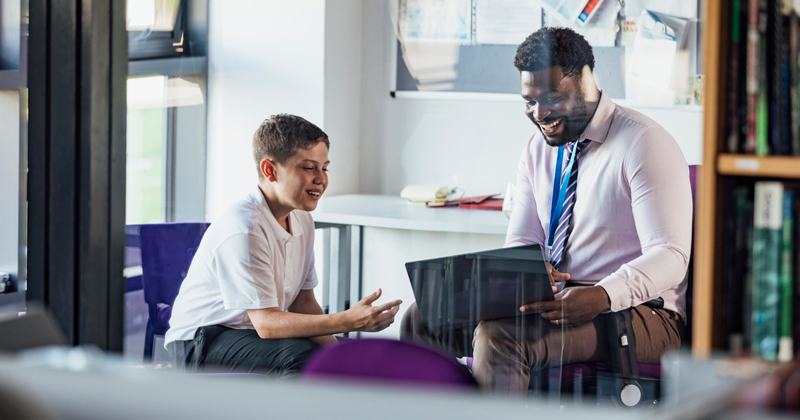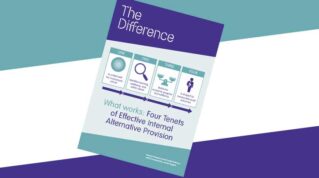When it comes to supporting our most vulnerable students, the traditional approach of relying on external alternative provision (AP) often falls short.
These students, many of whom are at risk of permanent exclusion, need a personalised, supportive environment that addresses their unique emotional, social and academic challenges. Too often, they fall through the cracks instead.
We’ve experienced this ourselves. Pupils on external AP placements became disconnected from our school, and vice versa. The quality and consistency of the support they received was often out of our control.
That’s why we built our own internal AP and moved almost all of them (about 60) back into our school. Our Positive Impact Centre now supports 100 students each year.
It is a place where we can offer a structured, nurturing environment, where our students can feel safe and gain the skills and confidence to re-engage with the curriculum and re-enter mainstream education.
Crucially, they are still very much part of our school community. Last year, 34 per cent of our pupils accessed the provision. This year, 21 per cent have already benefited from it.
But building that capacity requires careful planning and huge commitment. As many other schools look to develop their own, here’s what we’ve learned.
The money is there
The financial side of setting up an internal AP can be daunting, but it’s not impossible.
It took us about 18 months, from looking at our finances, ensuring governors were happy with our plans, appointing a manager and then creating a physical space for the centre.
We astutely reallocated our SEND funds and clawed back approximately £1 million that was being spent on pupils attending external alternative provision and on teaching assistants who were not being used as much as they could be.
This allowed us to ensure that every penny was spent on bespoke services that were tailored to our students’ needs. This money has been pooled centrally to allow us to intelligently fund our own in-house provision.
Recruit and re-train
No AP can be better than the people running it, so it’s essential to recruit passionate staff who are genuinely interested in working with vulnerable young people. Among our staff, we found many who were deeply committed to working with students with social, emotional and mental health needs.
All have received extensive training in a range of approaches from trauma-informed practice to emotional coaching to strategies for supporting students with anxiety, anger, and low self-esteem.
In addition, they have access to regular supervision and wellbeing workshops each is on a two-year training cycle so that they feel confident in their roles and have the latest strategies to support our students.
Be comprehensive
Many APs have a specialty, but internal provision can and should offer a comprehensive package of support. Our centre is built around several core strands of support.
We provide a safe and structured environment for all students who need time away from mainstream lessons and targeted support for students facing anxiety, depression and other mental health challenges.
We give students access to counselling and professional therapeutic support as well as more intensive mental health interventions when required.
We also offer bespoke assistance for students with English as an additional language, and subject specialist teachers work with students who are at risk of falling behind academically.
Re-engage, don’t remove
One of the biggest risks of setting up an internal AP is for it to become a ‘dumping ground’ for students who are difficult to manage in a mainstream setting.
Our Positive Impact Centre isn’t a place students are removed to; it’s a place where they receive the support they need to re-engage with learning.
And doing so has been transformative. Students who once faced exclusion are returning to classrooms. Staff are better equipped to support them. And our culture is more inclusive.
I am in no doubt that this has been a contributory factor in us becoming one of the most improved schools in the country and a national Behaviour Hub lead school.
Setting up our internal AP has been one of the most rewarding decisions we’ve made. Don’t be afraid to take the same step.












How can you really measure if it’s better in house? Student alienation is hard to quantify. What’s the empirical evidence?